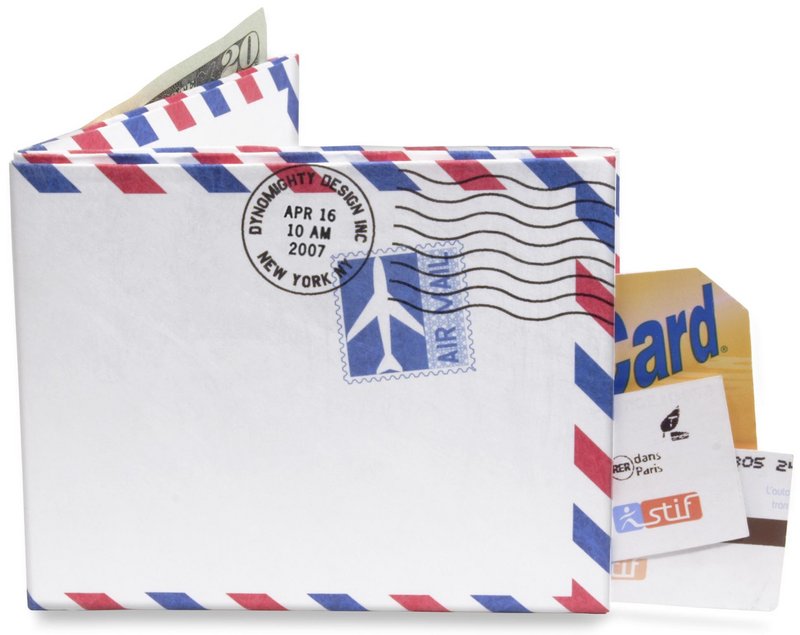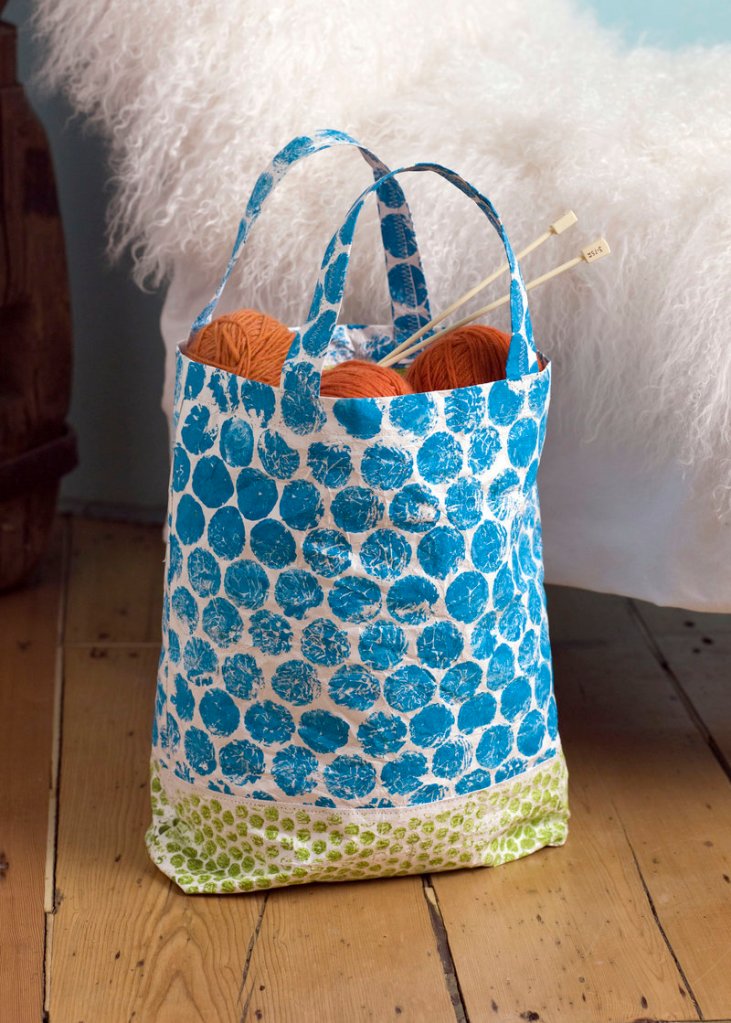It’s used to wrap homes during construction. It’s also a sturdy mailing envelope. It can be a tote bag, an identification wristband, a banner, a map. A race bib, a lamp shade, a camping ground cloth or a hoodie.
Tyvek is used for all of these things, and more.
Crafters are finding new ways to work with this lightweight, strong material in part because it has fabric-like qualities. A stroll through online crafting blogs shows artists crafting Tyvek into beads, and sewing, weaving and knitting it. They’re adding heat to warp it into unusual shapes.
Reusing Tyvek — which is made from polyethylene, a plastic — also helps keep it out of landfills.
“You can buy Tyvek, but from an eco-friendly standpoint, it is a big sheet of plastic that I’d prefer not to use,” says Betz White, author of “Sewing Green: 25 Projects Made with Repurposed & Organic Materials” (STC Craft/Melanie Falick Books, 2009).
White likes to sew with Tyvek; there are other brands out there, but they aren’t identical and they aren’t mentioned in crafting blogs. Tyvek doesn’t unravel, as many fabrics do. White reuses the mailers that come to her door, sometimes painting them first, because Tyvek holds acrylic paint well.
Her favorite Tyvek art project? Using plastic bubble wrap as a stamp, she painted three mailers, then sewed them into a tote bag, which she featured in her book. She says the material is easy to sew and water-resistant (the act of stitching creates tiny holes, so sealing the seams helps make a tote or garment more waterproof).
White, of North Potomac, Md., suggests using Tyvek in paper crafts. It also can be hand-embroidered, and it can be folded, like origami, to make a handy-dandy wallet.
The wallet is one of Tyvek’s most common crafting uses, and there are dozens of online instructions for folding a Tyvek wallet. It may look complicated — origami often does — but many postings make it easy with step-by-step instructions.
Terrence Kelleman posted his video instructions to YouTube in March 2008 and has received more than 160,000 views. His Tyvek wallet is made by cutting and folding a 9-by-12-inch envelope.
Kelleman started folding Tyvek wallets in 2005. Inspired by duct tape-crafted wallets, he figured he could make a lighter, more durable wallet with Tyvek.
It took a lot of folding, and failing. Today, Kelleman is the president of Brooklyn-based Dynomighty, a purveyor of colorful Tyvek wallets and totes, among other unusual products. His You Tube instructions are similar, but not identical, to the wallet his company sells online.
So, why did Kelleman share his wallet-folding secrets with the world?
“People are going to figure it out anyway,” says Kelleman. “For me to show them, it builds much more support for our company and our product.”
Even chemical company DuPont, which developed Tyvek and began commercial production in 1967, gradually discovered new and better uses for it, says Bob Matheson, a technical manager at the Richmond, Va., plant where the material is manufactured. Its first use? As disposable swimwear for hotels to give or sell to guests, says Matheson.
Then it was tried out as elementary-school textbook covers. Both of those applications fell away, but another early Tyvek product has endured: It’s still used as sterile packaging for shipping medical supplies.
It was one of those customers of sterile packaging, in Chicago, who approached DuPont during the 1980s with the idea of using Tyvek as housewrap, recalls Matheson.
“We were so excited,” says Matheson, “but we made him sign a contract not to sue us in case of catastrophe.”
No catastrophe followed, and that remains one of Tyvek’s primary uses today. But new uses continue to emerge.
“The coolest use is what we call ‘orange mulch,’ developed by the agriculture department in Japan,” says Matheson. “They use Tyvek as ground cover under orange trees — it reflects light — for growing sweeter oranges.”
For a look at some of the unusual ways that artists have reconfigured Tyvek, scan the unabashedly self-serving blog of Tyvek distributor Material Concepts of Philadelphia. A January posting offers instructions for building a Tyvek kite.
Doug Kohn, who manages the company blog, says art students dream up the most unusual Tyvek uses.
“Someone is making shoes out of Tyvek,” he says.
Send questions/comments to the editors.




Success. Please wait for the page to reload. If the page does not reload within 5 seconds, please refresh the page.
Enter your email and password to access comments.
Hi, to comment on stories you must . This profile is in addition to your subscription and website login.
Already have a commenting profile? .
Invalid username/password.
Please check your email to confirm and complete your registration.
Only subscribers are eligible to post comments. Please subscribe or login first for digital access. Here’s why.
Use the form below to reset your password. When you've submitted your account email, we will send an email with a reset code.